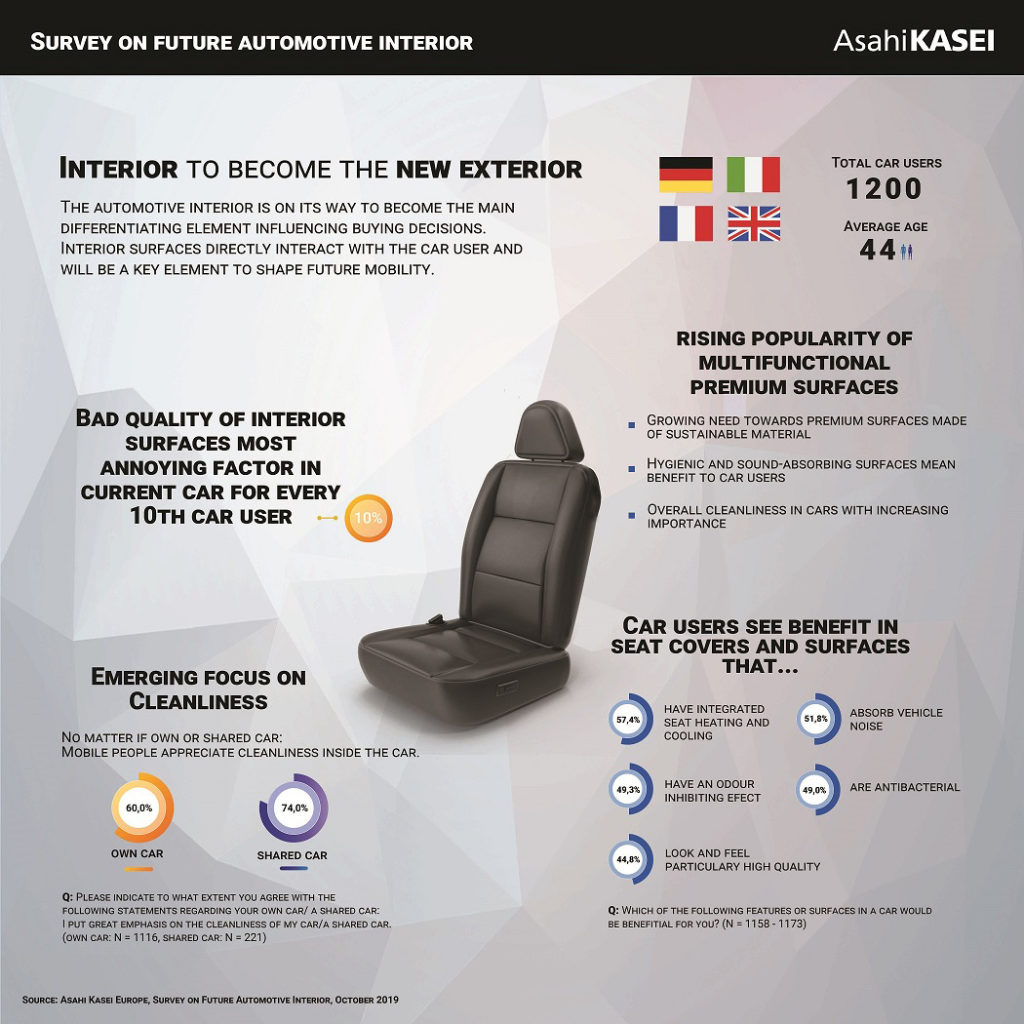There is an increasing demand for functional premium surfaces in the automotive industry, says a new survey by Asahi Kasei Europe. One of the report’s key findings is that interior features are on their way to becoming the main differentiating element influencing buying decisions – and, within the interior, a demand for premium, hygienic and sound-absorbing surfaces is on the rise.
The report noted that, due to increasing autonomy, the passengers will have to focus less on the traffic and will have more time to spend on work, in-car entertainment or just relaxation. As a result, the focus of attention will shift from the exterior, which has dominated for many decades, toward the automotive interior.
The survey was undertaken in October 2019 in collaboration with by Cologne-based market research institute SKOPOS, and interviewed a total of 1,200 car users in Germany, France, Italy and the UK regarding their preferences relative to mobility and especially to the future automotive interior.
It found that when buying their next car, 18.3% of all respondents in the four main European automotive markets will not buy the same brand as their current car, with 34,9% still undecided. So what were its findings regarding the factors influencing buyers’ purchase decision?
The report stated that for many decades the exterior design used to be the decisive, emotional factor in car purchase. While this is still valid, it found this “emotionalization” is now also taking place on the inside of the vehicle. Partially supported by new emerging drivetrain technologies and mobility models, the passenger compartment is becoming an increasingly important factor next to exterior, drivetrain, driving performance and fuel economy.
When purchasing their current car, the interior design (e.g. seats, surfaces, etc.) was important to 54.8% of respondents, compared with 57.2% who paid more attention to the exterior design. Looking ahead to the purchase of their next car, the interior increased in importance by 5% (59.8%), the exterior by 4% (61.4%).
The report found that automotive interior surfaces need to be attractive to the eye and smooth to the skin. One out of 10 respondents (10.3%) saw the poor processing quality of interior surface materials as the most annoying factor in their current car.
Meanwhile, 44.8% of all respondents saw a benefit in surfaces that look and feel especially high quality – for example for seats, dashboards or headliners – compared with just 11.4% who did not. A third of all participants (32.5%) would be willing to pay a reasonable price for these surfaces as an extra equipment.
Asked about the surface material itself, 57% of the respondents felt that sustainable materials for seat covers and surfaces would become increasingly important in the next five to 10 years, while the need for real leather equipment will fall drastically.
The results of the survey also highlighted an increasing desire for interior surfaces with added functionality, improving the overall driving experience. Asked about additional functions of the seat covers and surfaces, 49% of all respondents saw a benefit in these having antibacterial properties.
With the changing in-car driving experience, the perception of sound and noise was also found to be changing, with 16.1% of car users considering driving noise as the most annoying factor of their current car.



